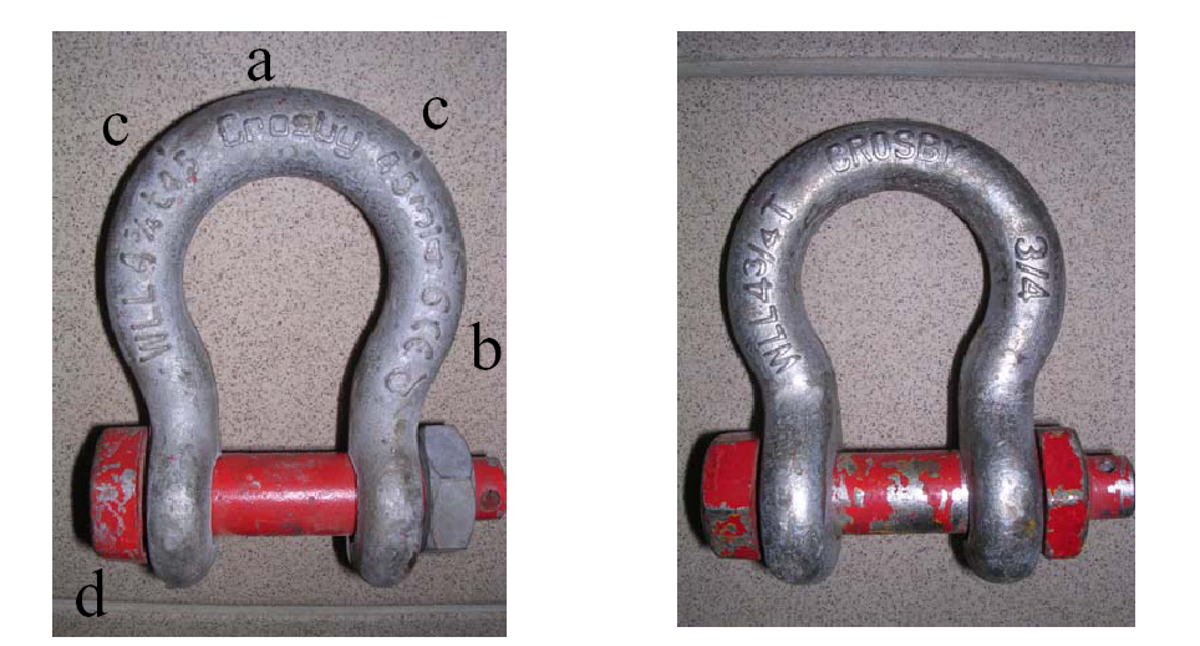Copies of Crosby shackles
- Safety Flash
- Published on 2 December 2004
- Generated on 19 December 2025
- IMCA SF 11/04
- 1 minute read
Jump to:
A Member has advised that while inspecting shackles in West Africa, it became evident several copies of Crosby shackles have been introduced to the marketplace.
These shackles are said to be not up to the quality standards of RRC-271D and it is recommended they be immediately removed from service.

Action
The points to look for in deciding whether you have a Crosby shackle or a copy are:
- On the face:
-
- The Crosby name should be embossed as per the Crosby logo.
- The CE mark should appear.
- Markings of 45 degree angles.
- On the rear of the shackles, two different groupings of IDs should appear (3 for Belgium manufactures) providing full traceability of the shackle.
- The pin should also be stamped (d) on the head with a traceable ID number.
IMCA has also heard from Crosby Europe that these shackles are circulating in both the African and the European markets. They also advise that WLL (t) and body size (inch) should also appear on its shackles. On some recent shackles there could also be a marking such as ‘6’ for the grade, which may appear on the shackle bow and pin.
IMCA Safety Flashes summarise key safety matters and incidents, allowing lessons to be more easily learnt for the benefit of the entire offshore industry.
The effectiveness of the IMCA Safety Flash system depends on the industry sharing information and so avoiding repeat incidents. Incidents are classified according to IOGP's Life Saving Rules.
All information is anonymised or sanitised, as appropriate, and warnings for graphic content included where possible.
IMCA makes every effort to ensure both the accuracy and reliability of the information shared, but is not be liable for any guidance and/or recommendation and/or statement herein contained.
The information contained in this document does not fulfil or replace any individual's or Member's legal, regulatory or other duties or obligations in respect of their operations. Individuals and Members remain solely responsible for the safe, lawful and proper conduct of their operations.
Share your safety incidents with IMCA online. Sign-up to receive Safety Flashes straight to your email.